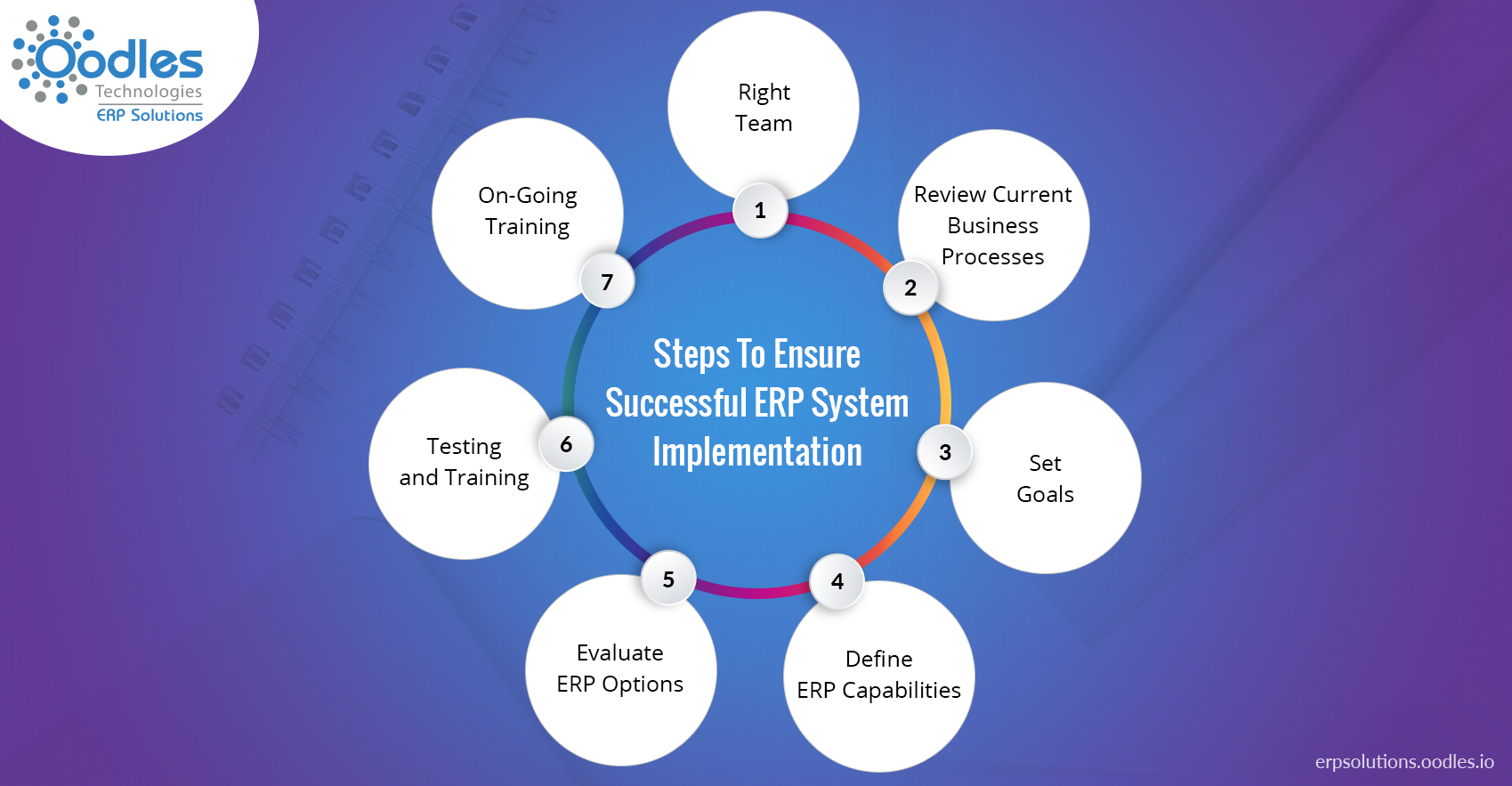Selecting the right ERP software is such a crucial task that takes a lot of time and research. However, after the selection process, the job of ERP implementation can be daunting. The biggest reason for ERP implementation failure is that it does not meet basic industry-specific business requirements. So, you need to have the right ERP system implementation strategy to ensure success.
Below are the most important steps to take that will lead to a successful ERP system implementation :
1. Select The Right People
Having right people at right time will help you to make your ERP system implementation definitely a success. Nothing is more important than this decision. So, choose an expert project team first. One should assign a project team with best employees from accounting, purchasing, sales, customer service, operations and senior management. Make a point that you assign knowledgeable workers as well as include top-level management on your team.
2. Review Your Current Business Processes
Analyse the business operations that you intend to improve. Discuss with your team members about which processes have issues. For example, what operations need automation? Do your employees have real-time access to relevant information from concerned departments? So, identify all these pain points in your company which needs improvement.

3. Set Goals
Why are you implementing an ERP system? The purpose of its implementation should be clear. A document including all the business objectives that you are targeting should be there. For instance, will the solution to improve on-time delivery? Does it removes problems?
4. Define Scope And ERP Capabilities
Based on the needs of the company, make your team review ERP software capabilities. Evaluate ERP features in accordance with the specific requirements of the company. Assess all manual procedures that need automation in an ERP system. Generate a requirement list that would be addressed by your ERP system.
5. Evaluate ERP Options
If you get an ERP software package, designed to meet your specific business needs, then there is no point in customizing an ERP system. Customized solutions sometimes result in an increase in the failure of an ERP project because it will add complexities. Thus, evaluate ERP options based on your current and future business requirements. It may be possible that you don’t need any customization after evaluation.
6. Testing And Training
It’s very important to test the database for checking data accuracy. Test properly to confirm if all the information that has pushed through the software is working correctly or not. With testing, do not forget training your employees as training is an integral part of ERP software implementation. Conduct an in-house training. After the completion of training, a final testing on processes should be done by the project team.
7. On-Going Training And Go-Live
Once the ERP solution implementation is performed correctly. The next thing is to do is go live. It’s better for a company to perform one additional functionality test, just as a safety precaution. Remember, an ERP software solution implementation is not just a short process, however, it is a long continuous process. To reap its maximum benefits, the company needs to continuously keep an eye on ERP issues or systemic problems which could affect the functionality.
Also, read: Social ERP: The ERP Of Future








